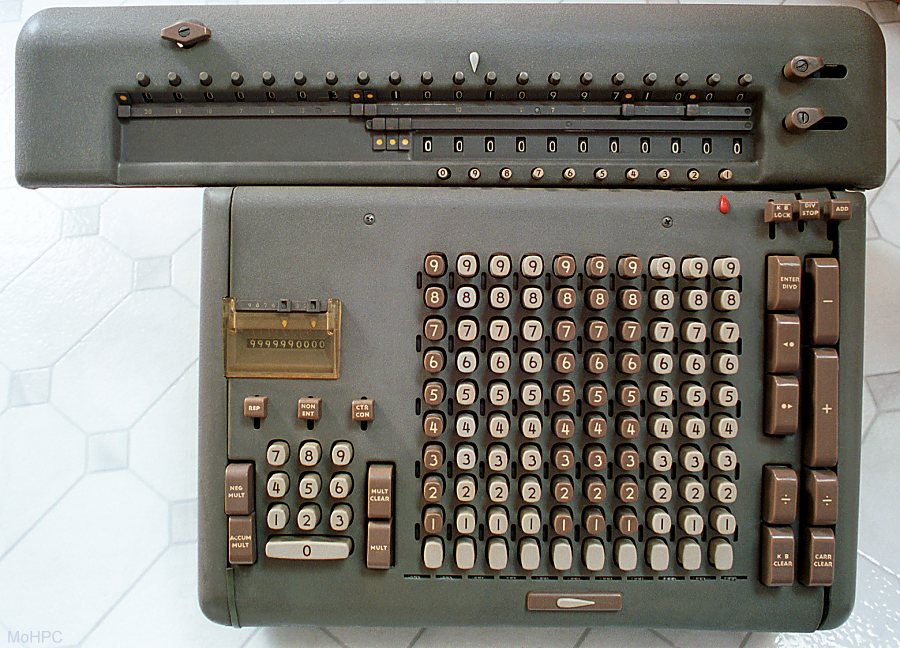Hi, Asher,
There's a steel rod/bolt in the concrete at that point . . .
Most likely a survey marker "pin". Note the punch mark in its center.
Yes, when I got my engineering degree (1957), all engineers at Case (even electrical) hard to learn surveying!
I even had to go to a two-week summer field exercise. Among other things, we set markers for an upcoming aerial survey of the state roads.
I was of course an arch-nerd at the time, and was teased a lot by one of the other teams, which seemed to have an excess charge of testosterone.
They had really bad luck when doing their final computations (on a big Friden mechanical calculator - each team was issued one). Like so:
Of course nobody knew what those two little unmarked teardrop-shaped knobs on the right-hand end of the carriage did when turned (enabled or disabled automatic register reset).
We did not often use that kind of calculator in school, but I knew about them since years earlier, when I would go to my father's factory with him on weekends, while he was doing paperwork in his office, I would sometimes go into the accounting office and play with them.
It's always good to know stuff.
Best regards,
Doug


